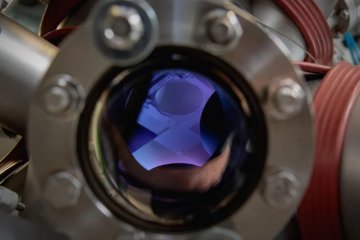All genres
921.
Thesis - PhD
Solid state dewetting phenomena of aluminum thin films on single crystalline sapphire. Dissertation, RWTH Aachen University (2017)
922.
Thesis - PhD
Towards On-Site Production of Hydrogen Peroxide with Gold-Palladium catalysts in Electrocatalysis and Heterogeneous Catalysis. Dissertation, Ruhr-Universität Bochum, Bochum, Germany (2017)
923.
Thesis - PhD
Dislocation transmission through copper grain boundaries at the micron scale. Dissertation, Ruhr-Universität Bochum, Bochum, Germany (2017)
924.
Thesis - PhD
Al-rich Fe–Al based alloys: Phase equilibria, microstructures, coarsening kinetics and mechanical behavior. Dissertation, Fakultät für Maschinenbau, Ruhr-Universität Bochum, Bochum, Germany (2016)
925.
Thesis - PhD
Micromechanical characterization of lead-free solder and its individual microstructure elements. Dissertation, Fakultät für Maschnenbau, RUB, Bochum, Germany (2016)
926.
Thesis - PhD
Nanostructure, thermal stability and mechanical properties of vapor phase deposited supersaturated Cu–Cr thin film alloys. Dissertation, Ruhr-Universität Bochum, Bochum, Germany (2016)
927.
Thesis - PhD
The mechanical behavior of thin metallic films on flexible polymer substrate. Dissertation, Ruhr-Universität Bochum, Bochum, Germany (2016)
928.
Thesis - PhD
TEM Investigations on Interactions of Dislocations with Boundaries. Dissertation, Department of Physical Metallurgy and Materials Testing, Montanuniversität Leoben, Franz-Josef Strasse 18, 8700 Leoben, Austria, Leoben, Austria (2015)
929.
Thesis - PhD
Investigation of interface properties of barrier metals on dielectric substrates. Dissertation, Department of Physical Metallurgy and Materials Testing, Montanuniversität Leoben, Franz-Josef Strasse 18, 8700, Leoben, Austria (2014)
930.
Thesis - PhD
Plasticity and fatigue of miniaturized Cu structures. Dissertation, Department of Physical Metallurgy and Materials Testing, Montanuniversität Leoben, Franz-Josef Strasse 18, 8700, Leoben, Austria (2014)
931.
Thesis - Master
Synthesis and Characterization of Reactive Magnetron Sputtered Fe1−xO Thin Films. Master, HHU Düsseldorf (2023)
932.
Thesis - Master
Solidification and precipitated structure of Al20CoxCr20Fe35Ni20-xTi5 (x = 0, 10, 20) compositionally complex alloys. Master, Heinrich-Heine-Universität Düsseldorf (2021)
933.
Thesis - Master
Microstructure Evolution in FCC Metals during Friction. Master, Heinrich-Heine-Universität Düsseldorf (2019)
934.
Other
Organization of symposium "Metals and Alloys" at Microscopy Conference 2024. (2024)
935.
Other
Preventing Hydrogen Embrittlement: The Role of Barrier Coatings for the Hydrogen Economy, Hydrogen 4 (2 Ed.), pp. 307 - 322 (2023)
936.
Other
Organization of symposium "Metals and Alloys" at Microscopy Conference 2023. (2023)
937.
Other
Organizer of the "Mini-symposium Experimental Micromechanics and Nanomechanics" at the ESMC2022. (2022)
938.
Other
Organizer of the "BiGmax Workshop 2022 on Big-Data-Driven Materials Science". (2022)
939.
Other
Nanobrücken 2020: A Nanomechanical Testing Conference (Organization). (2020)
940.
Other
"International Workshop on Advanced and In-situ Microscopies of Functional Nanomaterials and Devices" IAMNano 2019 (Organization). (2019)











